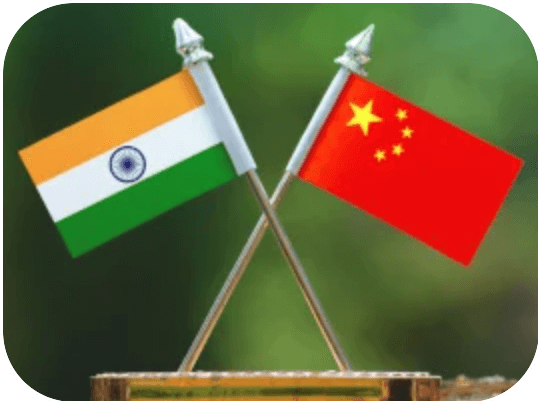Can India withdraw its dependency from importing Chinese Goods after the India- China Face-off at Galwan Valley?
-By Akrati Bhatia

Amidst the menacing Covid-19 crisis and increasing strains on the economy, the recent India-China Conflict at the Galwan valley shoved the public to gather out openly shouting slogans on “Boycotting Chinese products”.
But what is the reality like?
India’s trade with China touched $81 Billion in the year 2019-20, thus making India, the second largest trade partner of China after USA. The figures indicate how acutely India is connected in these trade tie-ups. However on the other side, since the outbreak of COVID-19 Pandemic, India became the second largest manufacturer of PPE (Personal Protective Equipment) Kits.
In addition our Hon’ble PM Narendra Modi pointed out towards his vision of ‘ Aatniarbhar Bharat’ and ‘Local Vocal’, desiring India’s development towards ‘Self Reliance’ and ‘Self Manufacturing’. Thus, if one follow figures, India’s trade deficit with China decreased by $10 Billion in 2019. Some of the major sectors of India’s dependency on China includes: Engineering and automobiles, Pharmaceuticals, telecom Sector (APIs), Power plant inputs, electronics, Chemicals & fertilizers etc.
The key interrogation that rises here is,
Why is China leading in the trade business and why does it remain a dominant world leader in supply chains?
The answers lies within two key elements that makes China a dominant power:
1. Firstly, China has always focused on developing its business capacities in a wide range of sectors by attracting huge FDI investments in the manufacturing sectors through abundant labour, infrastructure, and resources driven by geography. However on comparing this with India the FDI inflows in our country still remain limited despite being one of the biggest and most open economy. If one look at the trends, foreign investors have only preferred the ‘service sector’ for investment in India, such as IT sector.
The reason for this is quite clear, indicating towards lack of skill building in the manufacturing sector along with issues such as Infrastructure i.e outdated ports etc.
2. Secondly, another major trade policy due to which China became valuable in the supply chains is by “being a global leader in the process of final stage assembling”. It is quite important to note that this policy made China the biggest exporter of finished goods world over.
A overall analysis of the figures indicate towards a substantial potential that India hold towards attracting investments and strengthening its manufacturing sector, through specialised skill development with the help of initiatives like ‘ Make in India’ and ‘Skill India’. According to a report by Ministry of Commerce, if we look at the India – USA trade ties, India exports a good portion of goods to USA which includes apparel, pharma, chemicals, furniture, carpets etc., however exports from China are far greater than India.
A rough estimate indicates that out of 1200 odd commodities, there are about 720 items where China caters to at least 10 percent of US imports. Thus it means that the opportunities for India are quite wide and if India shifts only 5 percent of these exports from China in its favour by strengthening its production chains, the profit graphs will be around $140 billion for India. So, even if we do not withdraw our dependency on China we can still stand on equal footing in trade with China.